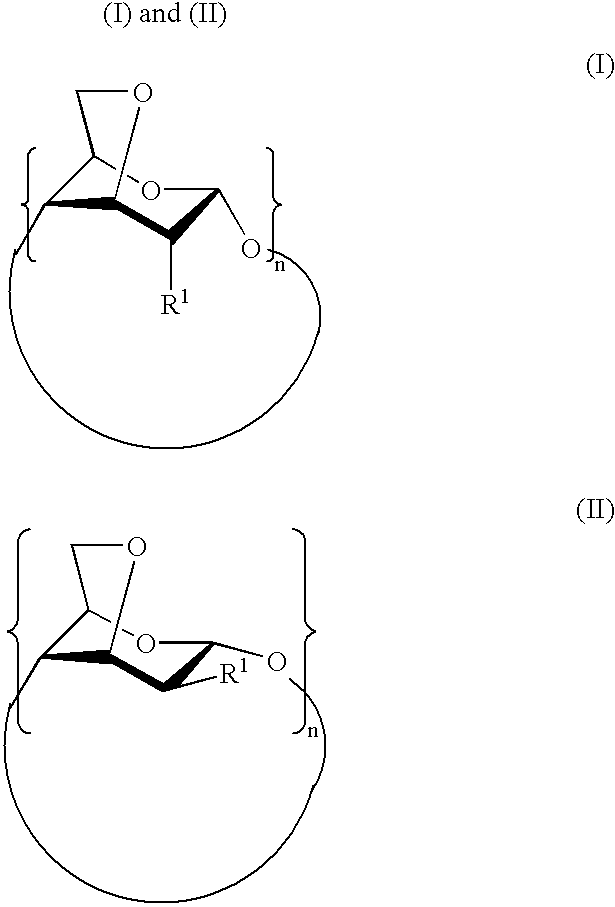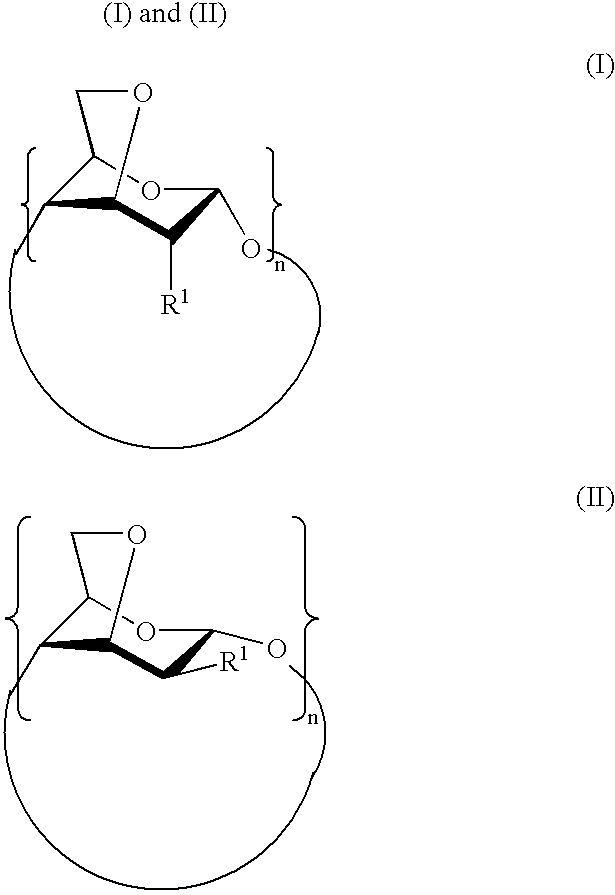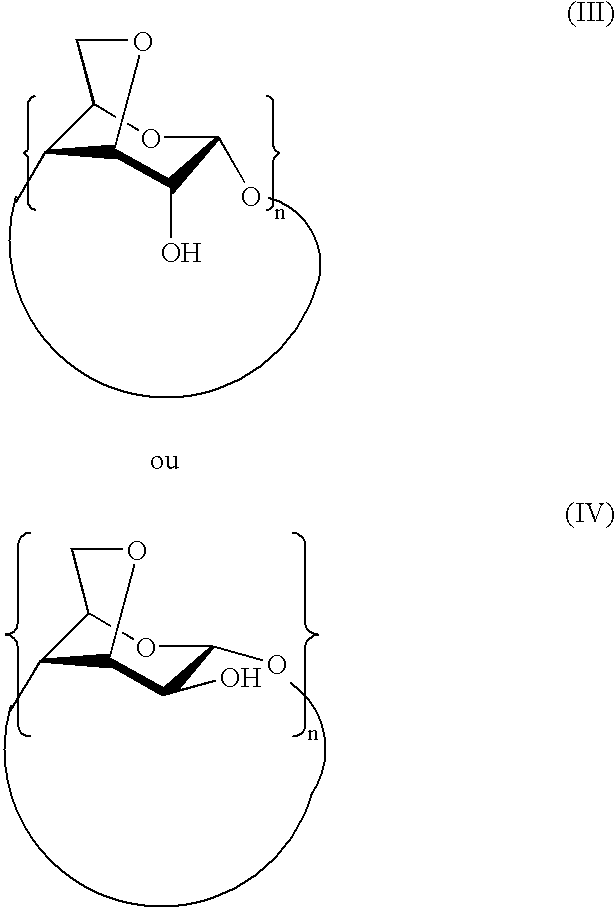Per-(3,6-anhydro)cyclodextrins derivatives, preparation and use thereof for separating ions
a technology of cyclodextrin and derivatives, which is applied in the preparation of sugar derivatives, chemical/physical processes, drug compositions, etc., can solve the problems of inability to obtain satisfactory separation and toxic to living organisms, and achieve the effect of adding selectivity
- Summary
- Abstract
- Description
- Claims
- Application Information
AI Technical Summary
Benefits of technology
Problems solved by technology
Method used
Image
Examples
example 2
Preparation of complexes of hexakis-(3, 6-anhydro-2-0-carboxymethyl)-cyclo-maltohexaose.
[0074] Each complex is prepared by adding 4 mmol / 1 of the tested cation to 500 .mu.l of an aqueous solution containing 1 mmol / 1 of the product from Example 1. The following cations were tested: Lu.sup.3+, LA.sup.3+, Dy.sup.3+, Eu.sup.3+ and Co.sup.2+.
[0075] The resulting complexes were then characterised by proton nuclear magnetic resonance spectrometry. The spectra obtained for Lu.sup.3+, La.sup.+, Dy.sup.3+, Eu.sup.3+ and Co.sup.2+ are shown in FIG. 1.
[0076] If these spectra are compared with the spectrum of the product from Example 1 on its own (CD), it can be seen that the spectra are considerably modified by the addition of the tested cations.
[0077] In the case of Dy.sup.3+, Eu.sup.3+ and Co.sup.2+ ions, there is a very strong interaction between these ions and the peracid. In fact, the spectrum of the per-(3,6-anhydro)-cyclodextrin derivative has completely disappeared, indicating that the ...
example 3
[0080] In this example, experiments were carried out to compare the derivative from Example 1 and ethylene diamine tetra acetate (EDTA) in complexing Dy.sup.3+, Eu.sup.3+ and Co.sup.2+ ions, in order to get an idea of the force of the complexes prepared in Example 2.
[0081] With this in mind, 4 mmol / 1 of the tested cation and EDTA were added to 50 .mu.l of an aqueous solution containing 1 mmol / 1 of the derivative from Example 1. The resulting products were than characterised by proton NMR spectrometry.
[0082] The spectra obtained are shown in FIG. 2. In this figure, it can be seen that the addition of EDTA makes it possible, in all cases, to partially recover the cyclodextrin spectrum. However, despite the addition of a large excess of EDTA compared to the cyclodextrin, the cyclodextrin spectrum is not completely recovered. This demonstrates that the cyclodextrin derivative complexes the cations more strongly than EDTA.
example 4
[0083] In this example, the complexation properties of the derivative from Example 1 were tested vis a vis physiological cations: calcium, sodium and potassium, all of which are required in the development of living organisms.
[0084] In fact, for human decontamination applications, the derivative must not complex with the physiological cations.
[0085] The same procedure was used as given in Example 2, and the resulting products were characterised by proton NMR spectrometry.
[0086] FIG. 3 shows the results obtained with Na+, K+and Ca.sup.2+.
[0087] In this figure, the spectrum (CD) corresponds to the derivative from Example 1 on its own.
[0088] It can thus be seen that the peaks from the derivative from Example 1 are hardly affected by the presence of the physiological cations, compared to the spectra shown in FIG. 1.
List of Documents Cited
[0089] (1): D. Duchne "Pharmaceutical application of cyclodextrins" in "Cyclodextrins and their industrial uses", D. Duchne, Ed., Editions de Sant, Par...
PUM
| Property | Measurement | Unit |
|---|---|---|
| hydrophobic | aaaaa | aaaaa |
| solubility | aaaaa | aaaaa |
| size | aaaaa | aaaaa |
Abstract
Description
Claims
Application Information
 Login to View More
Login to View More - R&D
- Intellectual Property
- Life Sciences
- Materials
- Tech Scout
- Unparalleled Data Quality
- Higher Quality Content
- 60% Fewer Hallucinations
Browse by: Latest US Patents, China's latest patents, Technical Efficacy Thesaurus, Application Domain, Technology Topic, Popular Technical Reports.
© 2025 PatSnap. All rights reserved.Legal|Privacy policy|Modern Slavery Act Transparency Statement|Sitemap|About US| Contact US: help@patsnap.com



